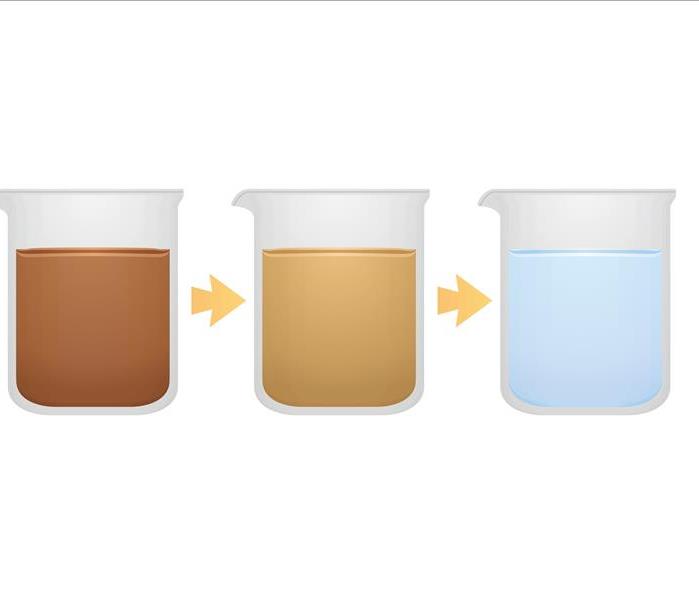The Potential Risks Associated With Contaminated Flood Water
10/12/2021 (Permalink)
Whether flood water gushes from an over-flowing toilet or rushes inside from exterior flooding, that water may carry raw sewage, unpleasant microbes, bacteria, viruses, and other contaminants. While you may successfully dry up clean minor leaks and spills on your New Bern, NC, property, any category 3 water damage should be handled by professionals.
The Categories of Flood Water
There are several factors that experts use to categorize water damage:
- The water's source
- How contaminated the water is
- The risk involved with exposure to the water
The classification of contaminated floodwater is important because it helps professionals and property owners determine the best course of action for the cleanup.
Category 1 Water
Water that comes from a sanitary source, such as the water dripping from a kitchen faucet or a from a burst pipe along the supply line, is "clean water." This water has minimal contamination and is relatively safe to encounter. However, if clean water is allowed to sit for an extended period, if it's exposed to high temperatures, or if it is allowed to come into contact with contaminants, the water could worsen to a more dangerous degree of uncleanliness. Although this water has a fairly positive classification, it can still cause damage and deterioration, so your quick response is crucial.
Category 2 Water
This classification of tainted water is referred to as "gray water." It could come from a dishwasher, washing machine, sink of dirty dishes, or a toilet overflow. This water may not carry feces, but it could have been exposed to urine. Detergents, chemicals, bacteria, and viruses could be present in category 2 situations. In addition to the harm caused by the contaminants, category 2 water causes primary and secondary damage when left to sit for more than a couple of minutes.
Category 3 Water
This water is dangerously contaminated and could lead to significant problems. If you have Category 3 floodwater in your building, avoid all contact with the water, including standing close enough to inhale aerosolized water. This water has higher levels of category 2 contaminants and includes other pollutants, such as stronger chemicals, heavy metals, and more dangerous microbes. This water may come directly from the sewer system or from natural bodies of water.
Cleanup and Remediation
When water damage cleanup and remediation experts arrive at your property, they may take air samples to look for mold spores, swab surfaces to measure bacterial contamination, and run lab analyses to test for E. coli and other potential infections. With this information, professionals determine the next steps, such as removing water, de-humidifying the property, and treating all affected materials, furnishings, and appliances. Once the plan is in place, you and the professionals can decide how to split the labor. Bear in mind the fact that technicians often have access to specialized equipment and supplies to improve lasting sanitization and decrease the risk of secondary damage.
When you first notice water where it doesn't belong, you may not know to extent of the contamination. If you have any reason to believe that flood water is unsanitary, contact cleanup and mitigation professionals.





 24/7 Emergency Service
24/7 Emergency Service
